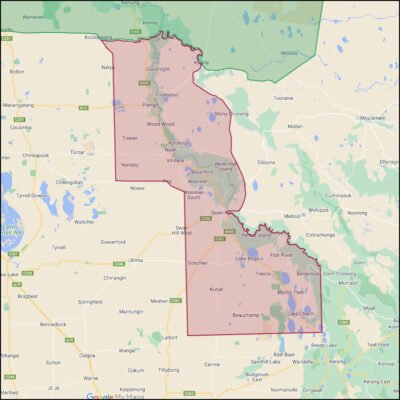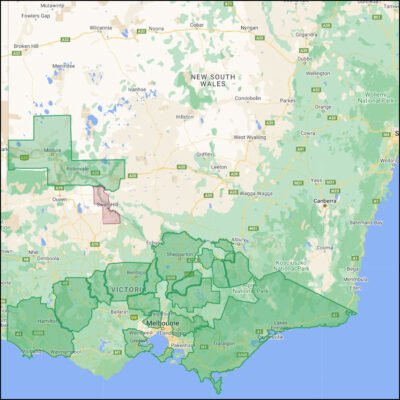The Swan Hill region is located in the northwest corner of Victoria and straddles the Murray River. It is partly in New South Wales and partly in Victoria.
Major Thomas Mitchell, an explorer who visited the region in 1836, named it after the abundance of swans and other waterfowl.
Irrigated crops were established as early as 1880, but viticulture was not established until the 1930s. Bests Wines, established in 1930, is recognised as the pioneer winery in this region.
Like its neighbouring regions, the region relies heavily on the Murray River for irrigation. The area has a warm to hot, semi-arid climate with long summers and very low rainfall. Hence, the river’s presence is crucial for maintaining the vineyards in otherwise arid conditions.
Like much of the Murray Darling Basin, Swan Hill was initially focused on high-volume bulk wine production, serving the growing demand for affordable Australian wine in domestic and export markets. It is, however, gradually evolving to produce a wide range of wines with boutique and large-scale wineries.
The region is known for producing a wide variety of fruit-forward, approachable wines. It excels in growing both red and white grape varieties, and its wines tend to have ripe fruit flavours, soft tannins, and a smooth, easy-drinking style.
Top Stats
Harvest
Early Feb to mid Mar
Mean Jan temperature
23.6°C
Area of Vine
2,211 hectares
Altitude
47 – 129m
Growing season rainfall
177mm
Principal Varietals
Chardonnay thrives in Swan Hill, where the warm climate produces wines with tropical fruit flavours such as pineapple and melon, often balanced by a creamy texture. Some producers use oak to add vanilla and buttery notes, but fresh, unoaked styles are also available.
Like much of Victoria, Shiraz is one of the most important varieties in this region. The warm climate produces Shiraz with ripe, rich berry flavours, hints of spice, and a smooth, approachable texture. Swan Hill Shiraz tends to be medium to full-bodied, with soft tannins and moderate acidity.
Another key red variety, Cabernet Sauvignon, offers bold flavours of blackcurrant, dark cherries, and plum, with some herbal undertones. The wines are typically ripe and juicy, with a softer tannin structure compared to cooler regions.
Known for its plush texture and soft tannins, Merlot from Swan Hill often shows plum, dark berries, and chocolate flavours. It’s a smooth, easy-drinking red wine, great for casual enjoyment.
A white variety that has adapted well to Swan Hill’s warm climate, Verdelho is known for its vibrant tropical fruit flavours, such as pineapple, passionfruit, and citrus. It produces bright, refreshing wines with a slight spiciness on the finish.
Noteable Varietals
Though typically a cool-climate variety, Sauvignon Blanc grown in Swan Hill develops ripe tropical fruit and melon flavours with softer acidity than is found in cooler regions. It’s often made in a fruit-driven style, highlighting its tropical characteristics.
Swan Hill’s warm climate also leads to riper, fuller-bodied Pinot Gris, with pear, apple, and stone fruit flavours. These wines tend to be richer and rounder than cooler-climate examples.
Other varieties grown in the region include Grenache, Petit Verdot, Semillon, Durif, and Viognier, demonstrating the diversity of the region’s viticulture.
Source: www.wineaustralia.com,








